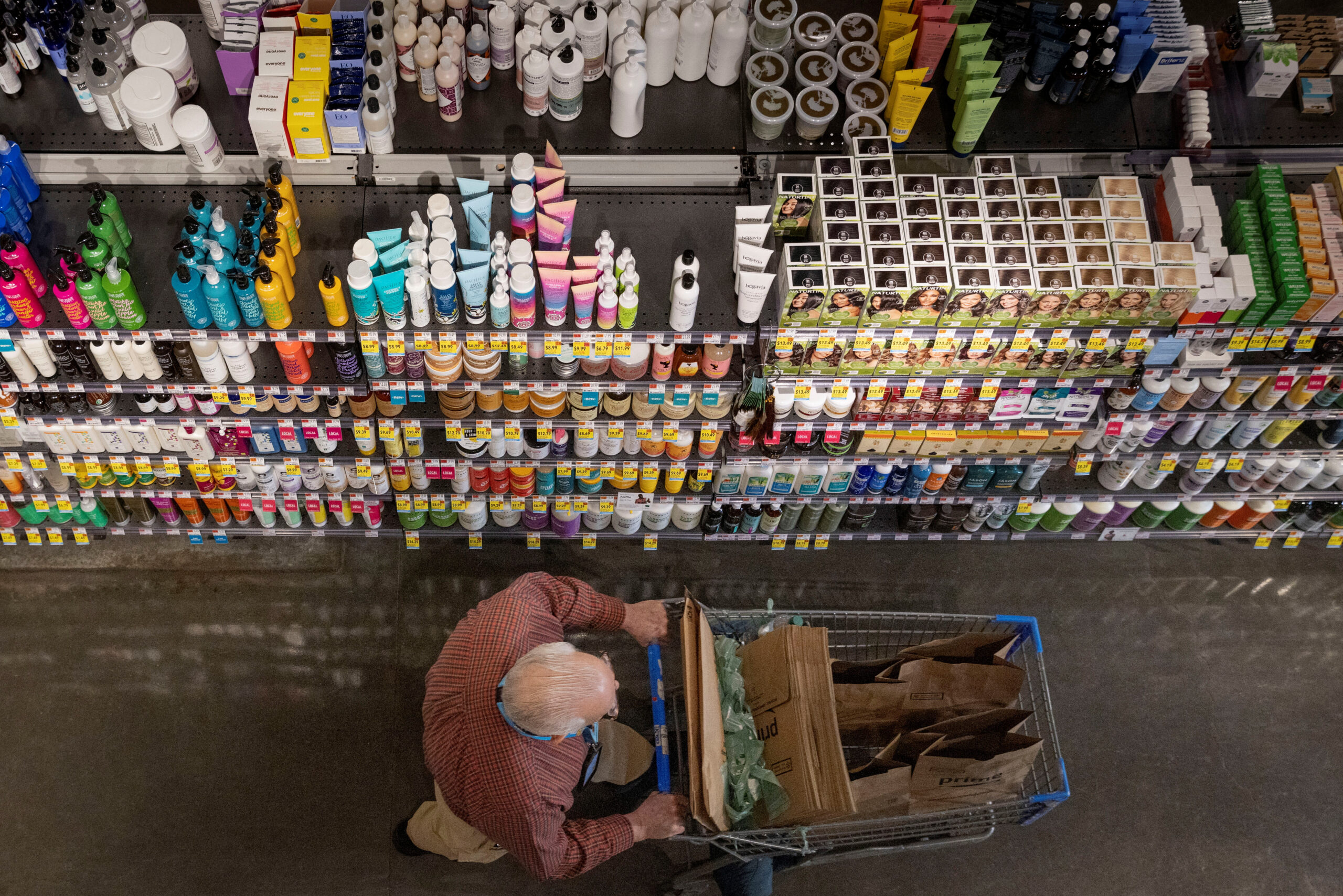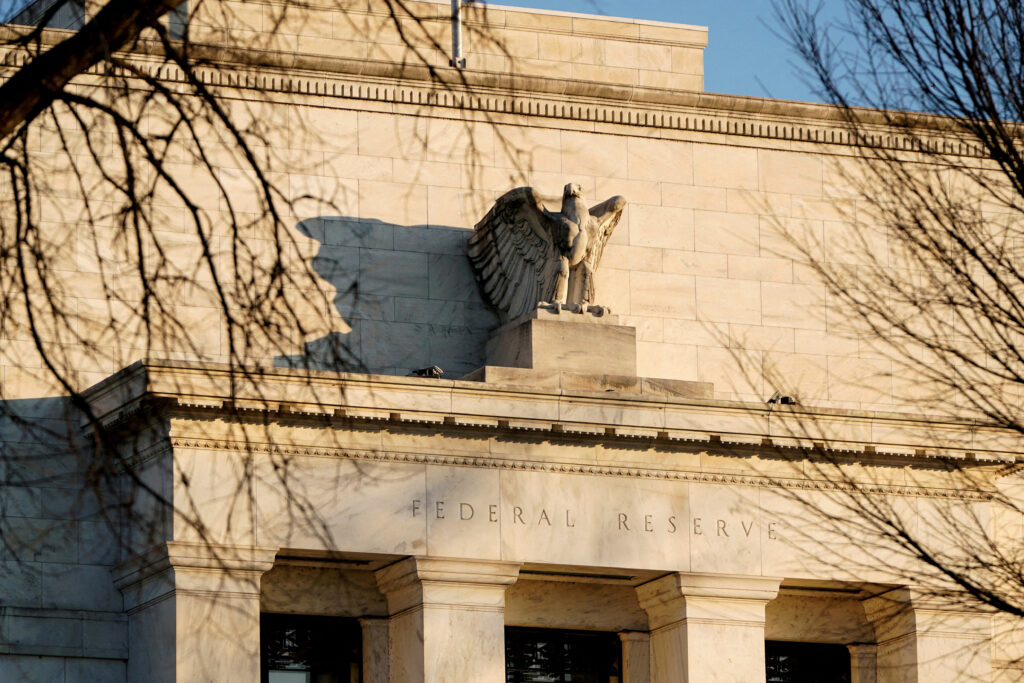WASHINGTON – U.S. retail sales unexpectedly rose in August as a decline in receipts at auto dealerships was more than offset by strength in online purchases, suggesting that the economy remained on solid footing through much of the third quarter.
The report from the Commerce Department on Tuesday also showed retail sales were a bit stronger than initially thought in July. It combined with the decline in the unemployment rate last month to push against financial market expectations for a half-percentage-point interest rate cut from the Federal Reserve on Wednesday. U.S. central bank officials were preparing to gather for a two-day policy meeting on Tuesday.
The Atlanta Fed raised its third-quarter GDP growth estimate to a 3.0% annualized rate from a 2.5% pace following the data. The economy grew at a 3.0% pace in the second quarter.
“There does not appear to be any reason for Fed officials to start out with a larger 50 basis points rate cut because whatever stress there is in the labor market, it isn’t translating into weaker economic demand,” said Christopher Rupkey, chief economist at FWDBONDS. “If this is an economy on the brink of recession, consumers certainly don’t see it.”
Retail sales increased 0.1% last month after an upwardly revised 1.1% surge in July, the Commerce Department’s Census Bureau said. Economists polled by Reuters had forecast retail sales, which are mostly goods and are not adjusted for inflation, falling 0.2% after a previously reported 1.0% jump in July. Estimates ranged from a 0.6% decline to a 0.6% gain.
Retail sales increased 2.1% on a year-on-year basis in August. Online store sales rebounded 1.4% last month after falling 0.4% in July. Sales at gasoline stations dropped 1.2%, reflecting lower prices at the pump. Cheaper gasoline is likely freeing money for other spending.
Sales at sporting goods, hobby, musical instrument, and bookstores increased by 0.3%. Building material and garden equipment store sales edged up 0.1%.
Sales at miscellaneous retailers shot up 1.7%, while those at health and personal care outlets increased 0.7%.
But sales at food services and drinking places, the only services component in the report, were unchanged after rising 0.2% in July. Economists view dining out as a key indicator of household finances.
Furniture store sales fell 0.7%. Receipts at electronics and appliance outlets dropped 1.1%, while those at clothing retailers decreased 0.7%. Receipts at motor vehicle and parts dealers dipped 0.1% and department store sales tumbled 1.1%.
Some of the decline in sales was likely due to lower prices rather than volume. Prices for goods, including furniture, have been on a downward trend.
Financial markets saw a roughly 59% probability of a 50 basis points rate cut on Wednesday, down from 67% before the retail sales data was published, according to CME Group’s FedWatch Tool. The odds of a quarter-point rate reduction were around 41%, up from 33% earlier.
Stocks on Wall Street were trading higher, with the benchmark S&P 500 briefly setting an intraday record high.
The dollar nudged up against a basket of currencies. U.S. Treasury yields rose.
UNDERLYING STRENGTH
The Fed has maintained its benchmark overnight interest rate in the current 5.25%-5.50% range for over a year, having raised it by 525 basis points in 2022 and 2023.
Most economists expect the central bank to cut interest rates by 25 basis points on Wednesday, arguing that the economy is not in enough distress to warrant the half-percentage-point reduction being anticipated by financial markets.
The unemployment rate fell to 4.2% in August after four straight monthly increases lifted it to a near three-year high of 4.3% in July. The jobless rate has been largely driven by increased labor supply from immigration, which is now slowing.
Layoffs remain low by historical standards, leaving the labor market in a position to continue generating steady wage gains that are supporting consumer spending and the overall economy. Economists are split on the implications that a declining saving rate could have on spending.
Some view the saving rate, which dropped to 2.9% in July and is near levels last seen in 2008, as portending softer spending ahead. They also expect precautionary savings to rise if the labor market deteriorates, which could weigh on spending.
However, others argued that the government wasn’t fully capturing income earned by undocumented immigrants. They also pointed to strong household balance sheets against the backdrop of higher house and stock prices as supportive of future consumer spending.
“For all the signs that low-income consumers are struggling, we think the risks of that weakness migrating up the income spectrum are low,” said Michael Pearce, deputy chief economist at Oxford Economics. “Middle- and higher-income households sit on considerable wealth gains since the pandemic, mainly reflecting the surge in housing equity.”
Retail sales excluding automobiles, gasoline, building materials, and food services increased by 0.3% last month after rising by an upwardly revised 0.4% in July.
These so-called core retail sales were previously reported to have gained 0.3% in July. Core retail sales correspond most closely with the consumer spending component of gross domestic product. Economists estimated that inflation-adjusted core retail sales rose 0.1% in August, putting consumer spending on track to grow at an annualized rate of roughly 3.5% this quarter.
The raft of upbeat news on the economy was extended by other data on Tuesday showing a sharp rebound in manufacturing production last month. However, a downward revision to July’s output took off some of the shine.
Factory output increased 0.9% last month amid a surge in motor vehicle production after a downwardly revised 0.7% drop in July, the Fed said in a second report. Economists had forecast factory output would rise 0.3% after a previously reported 0.3% decline in July.
Business inventories also rose slightly above expectations in July, a potential boost in the calculation of GDP this quarter.
“Manufacturing is nowhere near as weak as would normally be the case if the U.S. economy were in recession,” said Conrad DeQuadros, senior economic advisor at Brean Capital.
(Source: ReutersReuters)
Mark Glenn is a financial journalist and breaking news reporter for ABBO News. Mark is known for his ability to deliver real-time news updates on market developments, mergers and acquisitions, corporate earnings reports, and regulatory changes, helping investors stay informed and make sound financial decisions. Read Full Bio










